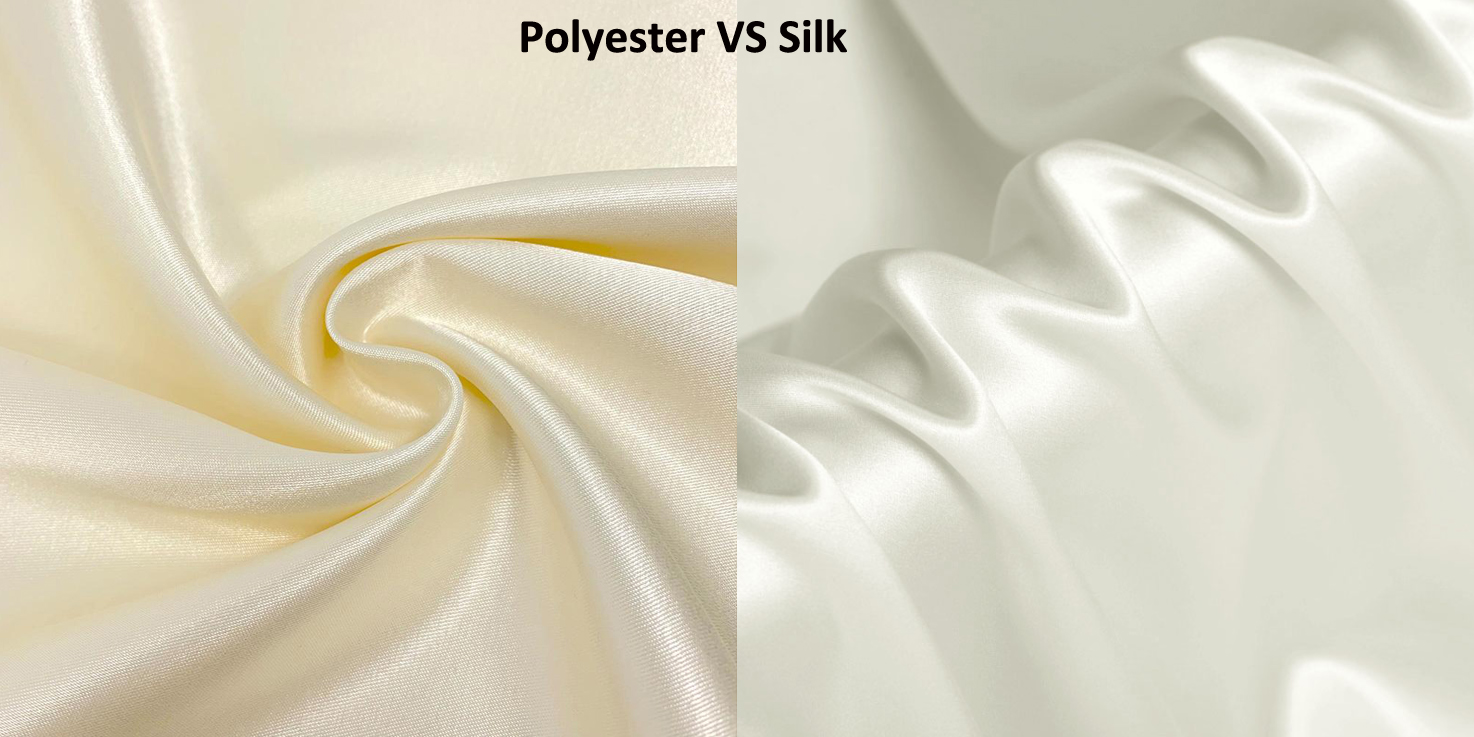Silk is the most desired cloth in the world ever since it was first discovered around 3000 BC. It's a fantastic fabric that's both sturdy and adaptable, with a wide variety of advantages and applications. Real silk is a premium and beautiful fabric, and the sheer quality and elegance appeal to people seeking a high-end investment that will last a lifetime.
With all of this in mind, it's no wonder that individuals and businesses all over the globe are keen to replicate its features and pass off cheap, imitated silks as if they're the genuine thing.
Unfortunately for us, the rise of internet buying has made this common silk fraud even simpler to perpetrate. We're witnessing a torrent of phony silks on eBay and Amazon, and the issue is that buyers have no idea what they're purchasing or who they are buying from.
It doesn't end there; many internet companies have perfected their branding to seem respectable, but the actual products they're selling are anything but. Here are some tests that can show you the difference between real and fake silk.
Tests to Check for Real Silk
- Burn Test
Set it on fire! The burn check is the most straightforward method of determining whether or not the silk is genuine.
If your silk is genuine, you will be able to:
- Visuals: Silk tends to have a slow burn, and there is little fire.
- Smell: Burning silk has the same odor as burning hair.
- Touch: Feel the tiny dark beads with your fingertips. They readily crush into powder.
It's a method of determining whether or not the fiber is protein. Wild silk, cashmere, and wool are the most prevalent protein fibers, apart from mulberry silk. Fabrics manufactured from these materials do not seem to be silky.
Nobody likes to cut the silk bed sheet or duvet cover, even if the burn test is easy and quick. This test is only possible if you buy silk wholesale or the company sends a small silk sample with whatever you buy to test it.
- HCIO Disinfectant / Bleach Test
Hypochlorous Acid (HClO) is the most powerful disinfectant within the chlorine agents; it even appears 11 times as an active component to be used as disinfectants against COVID-19. It outperforms bleach and non-corrosive disinfectants by 80 times.
In HCIO, real silk completely dissolves. There are three stages to the test:
- Gather a silk cloth and HCIO disinfectant.
- Soak the silk towel in disinfectant for 3 to 5 minutes.
- If it is real 100% silk, it will vanish.
If there's still anything in the cup, apply extra disinfectant to make sure that it completely dissolves. After 5 minutes, if you can still see any silk fibers or bits, the sample fails the test. Make sure to try this on a sample and not your new silk scarf.
Silk Myths
There are very popular tests to check the difference between real and fake silk that simply do not work! Here are some myths that you may have heard about.
Myth 1: ‘Luster’ of Real and Fake Silk is Different
It can be quite hard to tell the difference between fake and real silk by sight alone. Even silk experts may have trouble with this. The myth is that real silk changes to different colors depending on the light shining on it, while artificial silk gives off a white sheen no matter what. However, the luster and sheen of silk can vary from cloth to cloth. For example, habotai silk doesn’t have a glossy look but is 100% real silk.
Depending on the lighting, fake and real silks can give off sheen and luster too. Plus, if you are buying online, Photoshop can make any cloth look like silk, so this definitely isn’t foolproof!

Myth 2: Real Silk Feels Warm When Rubbed
Rubbing pretty much any fabric will generate warmth to touch from basic friction. Different rubbing speeds will generate different levels of warmth too, so this isn't a standard test that can be used every time with reliable results.
Different fabrics like nylon, cotton, viscose, and canvas also feel warm when you rub on them. There is also no expert or technical evidence that highlights whether silk actually feels warmer to touch. Plus, with around 30 types of real silk available, they will all have different temperatures when rubbed.
Myth 3: Real Silk’s Color Doesn’t Fade Since It is Free from Chemicals
No fabric is really completely free from chemicals, and experts agree that real silk tends to fade even more. Some tests suggest that if you dip silk into detergent, and the color doesn't bleed into the detergent, it is real silk. However, the color you choose can impact color bleeding.
The raw silk fibers will also go through chemical treatment such as degumming agents and finishing additives. This shows that no silk is completely free from chemicals. It also tends to have more color fading since acid dye is used to make it. They are soluble in water. The darker the color is, the more likely it is to fade.
Myth 4: The Ring Test
Ring tests are mostly used for pashminas, not all types of silk. The highest grade for cashmere can be detected through the ring test. Silk can come in different sizes and thicknesses, so a simple silk scarf may work but not a thicker bed sheet.
Myth 5: Silk Made in China is Fake
80% of all genuine silk is actually produced in China, so this is definitely a myth. It is far more likely that silk coming out of China is real.
Myth 6: Silk Doesn’t Develop Wrinkles
Most common silk types are actually more prone to getting wrinkled, such as charmeuse. Thinner silks tend to get more intense wrinkles than other types. While silk fiber is definitely the smoothest natural fiber out there, silk bed sheets, duvet covers, and pillowcases may get wrinkled. However, they feel so good on the skin and have so many benefits that it doesn’t really matter!
In Conclusion
When you are purchasing silk, make sure to contact a reputable silk manufacturer. It is better if you will get a small piece of silk sample to do real tests on to ensure its authenticity. Buying in bulk also means that you can do the test on one of the pieces rather than affect all of them. We hope now you have learned how to tell the difference between real and fake silk.





 English
English German
German French
French Russian
Russian Spanish
Spanish Japanese
Japanese Korean
Korean Portuguese
Portuguese Ukrainian
Ukrainian Arabic
Arabic Italian
Italian











Leave A Comment